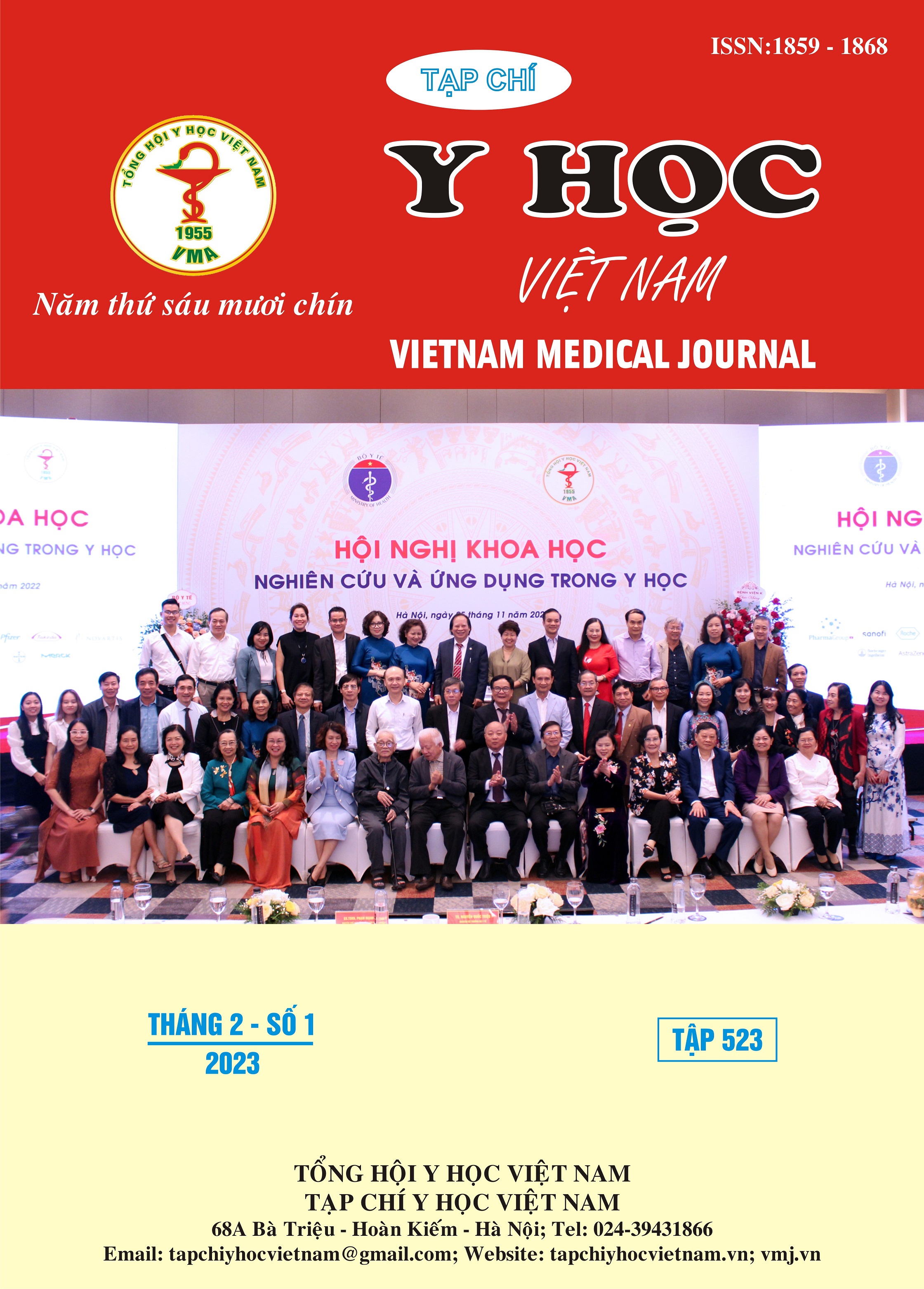EVALUATION OF ABILITY AND SOME RESULTS OF TEAM WORKING ACTIVITIES IN EMERGENCY FOR PATIENTS WITH ACUTE ISCHEMIC STROKE IN 108 MILITARY CENTRAL HOSPITAL
Main Article Content
Abstract
Objective: Evaluation of ability and some results of team working activities in emergency for patients with acute ischemic stroke in Central Military Hospital 108 from 2014 - 2019. Subject and method: Retrospective, Cross-sectional study. We collected the assessments of 52 medical staff in the emergency group by using a TEAM. At the same time, we retrieved all records of 824 patients with acute cerebral infarction treated in Central Military Hospital 108 from April 2014 to December 2019 to collect information about the timely emergency in acute ischemic stroke patients. Result: Number of medical staff involved is 52, the average age of 34,78 ± 8,18. The male ratio is 69,23%. TEAM score when assessing the activities of the group: team leader: 3,71 ± 0,52 points, the team communicated effectively: 3,75 ± 0,44 points, the overall score: 88,95 ± 0,89, the team followed approved standards: 3,61 ± 0,56. The door to examination time was 14,09 ± 15,16 minutes, door to CT scan was 22,13 ±19,05 minutes, door to stroke team discussion was 41,25 ± 25,76 minutes, door to needle was 49,55 ± 28,13 minutes and door to revasculization time was 88,68 ± 41,75 minutes. Conclusion: The team working activities in emergency for patients with acute ischemic stroke in Central Military Hospital 108 is an effective model that contributes to improving the quality of emergency care, diagnostic and treatment for patients with acute ischemic stroke.
Article Details
Keywords
Acute ischemic stroke, teamwork, emergency times
References
2. Cant, R. P., Porter, J. E., Cooper, S. J., et al. (2016), "Improving the non-technical skills of hospital medical emergency teams: The Team Emergency Assessment Measure (TEAM)", Emerg Med Australas. 28(6), pp. 641-646.
3. Cooper, S., Cant, R., Porter, J., et al. (2010), "Rating medical emergency teamwork performance: development of the Team Emergency Assessment Measure (TEAM)", Resuscitation. 81(4), pp. 446-52.
4. Jauch, E. C., Saver, J. L., Adams, H. P., Jr., et al. (2013), "Guidelines for the early management of patients with acute ischemic stroke: a guideline for healthcare professionals from the American Heart Association/American Stroke Association", Stroke. 44(3), pp. 870-947.
5. Meretoja, A., Strbian, D., Mustanoja, S., et al. (2012), "Reducing in-hospital delay to 20 minutes in stroke thrombolysis", Neurology. 79(4), pp. 306-13.
6. Powers, W. J., Derdeyn, C. P., Biller, J., et al. (2015), "2015 American Heart Association/American Stroke Association Focused Update of the 2013 Guidelines for the Early Management of Patients With Acute Ischemic Stroke Regarding Endovascular Treatment: A Guideline for Healthcare Professionals From the American Heart Association/American Stroke Association", Stroke. 46(10), pp. 3020-35.
7. Reimers, Bernhard (2016), Building a multidisciplinary team for interventional acute stroke management, Humanitas University Rozzano – Milan Italy.
8. Rosamond, W. D., Folsom, A. R., Chambless, L. E., et al. (1999), "Stroke incidence and survival among middle-aged adults: 9-year follow-up of the Atherosclerosis Risk in Communities (ARIC) cohort", Stroke. 30(4), pp. 736-43.


